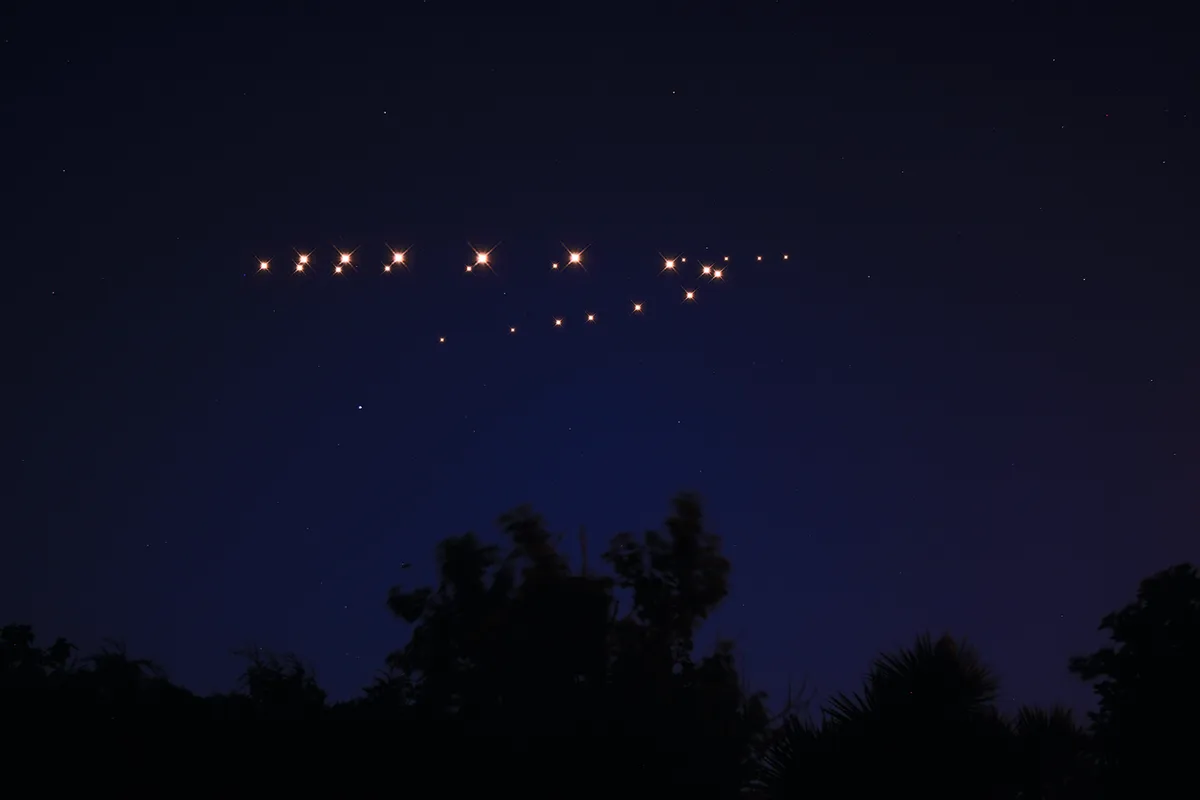Mars has had some interesting encounters this month, passing close to Uranus and the Pleiades.
On 2 August, mag. +0.2 Mars sat just 1.3º south of mag. +5.8 Uranus.
Mars slowly drifted east from Uranus over the following mornings, but remained fairly close to the dimmer planet for several days.
On 5 August, for example, Mars and Uranus were just 2.3º apart.

After this planetary encounter, Mars continued tracking east, and will appear to pass 5.7º south of the Pleiades open cluster on the morning of 22 August.
Before this, on 19 August, both planet and cluster are joined by the last-quarter Moon, located 5º west of Mars on this date.
The Moon will pass 2º north of Mars at 13:00 BST (12:00 UT) on 19 August under daylight conditions, while 16º above the western horizon.
On the morning of Saturday 20 August, the now 41%-lit waning crescent Moon will sit 7.7º east of Mars.
Mars has now reached its opposition constellation of Taurus and will remain within this constellation’s boundaries for the remainder of 2022 and into 2023.
This is a sign that we are getting ever closer to Mars opposition on 8 December 2022.
As it does this, it’ll also be performing a retrograde loop, reversing direction to head west before repeating the action to resume its eastern track.

If you’re interested in long-term astrophotography of the position and brightness of Mars against the backdrop of Taurus, the coming weeks will allow you to record and present the retrograde loop against the stars of the Bull.
It will also offer an opportunity to compare the colour of Mars with the orange-tinted Aldebaran (mag. +0.8 Alpha (α) Tauri).
This guide originally appeared in the August 2022 issue of BBC Sky at Night Magazine.

